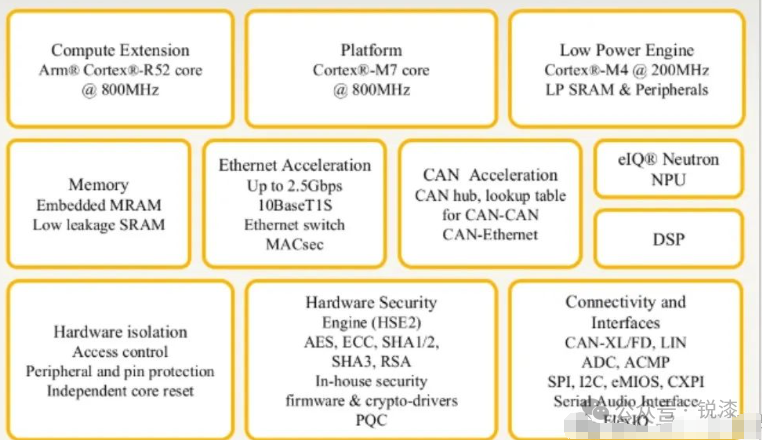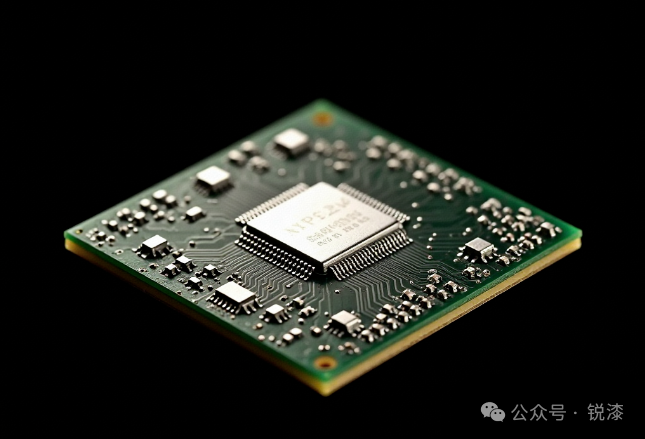Today, I want to talk to you about a major event in the automotive industry! Just yesterday, NXP launched a “revolutionary” chip, the S32K5, which completely changed my perception of automotive OTA upgrades! The write speed is 15 times faster than flash memory! OTA upgrades can be completed in just a few seconds, faster than scrolling through Douyin! This speed would make even Tesla shout, “Big Brother!” I have always believed that modern cars are like large smartphones, where software experience is becoming increasingly important. However, the speed of automotive OTA upgrades has always been a significant issue. Every upgrade takes forever, making me hesitant to click “update.” Now, with the S32K5, if I suddenly want to experience the latest autonomous driving features while driving on the highway, no problem! It can be done in seconds, instantly activating smart driving mode—just thinking about it is thrilling!What exactly is this S32K5 black technology? After careful research, I found that its core goal is to accelerate the transition of automotive design to a partitioned architecture. To put it simply, traditional automotive electronic architecture is like a small village where each ECU (Electronic Control Unit) operates independently, leading to low communication efficiency. In contrast, a partitioned architecture is like a well-planned modern city, integrating different functional modules into several powerful regional controllers for efficient collaboration. The S32K5 is the chief designer of this “smart city”!So how does it achieve this? First, the 16nm FinFET process brings significant improvements in performance and power consumption. It’s like replacing a car’s engine with an F1 racing engine—powerful and fuel-efficient! Lower power consumption means longer range, while higher performance supports more complex software functions, such as AR navigation and gaming entertainment, effectively turning the car into a mobile entertainment center!Secondly, the introduction of MRAM completely resolves the bottleneck of slow traditional flash memory speeds. Previously, automotive OTA upgrades were like downloading a high-definition movie on an old computer, which could be incredibly frustrating. Now, with MRAM, the speed is increased by 15 times, akin to downloading a small song in a flash! Say goodbye to slow OTA updates and keep your beloved car always up to date!Besides speed, MRAM also boasts an ultra-long lifespan and data retention time, like a data vault with an indestructible body, ensuring your automotive electronic systems are stable and reliable, eliminating concerns about data loss or system crashes!Of course, NXP’s upgrade is not just a simple hardware enhancement; the S32K5 also features significant architectural innovations. It employs a heterogeneous multi-core design, functioning like an efficient team, with Cortex-R52 and Cortex-M7 handling primary computing and control tasks, while Cortex-M4 manages low-power operations, each performing their roles and collaborating effectively!It also integrates a 2.5 Gbps Ethernet switch and supports CAN-XL, akin to building highways and intercity railways for cars, enabling rapid data transmission and eliminating lag, providing a smooth experience!To achieve the partitioned architecture, the S32K5 also utilizes XRDC (Extended Resource Domain Controller) technology, which can hardware-isolate different functional modules, like assigning independent office areas to various departments in the car’s brain, ensuring they do not interfere with each other and maintaining system security and stability. This means that the autonomous driving system and entertainment system do not interfere with each other; even if the entertainment system crashes, it won’t affect the autonomous driving functionality, maximizing safety!Speaking of safety, the S32K5 excels in this area as well, supporting post-quantum cryptography (PQC) technology to withstand future quantum computer attacks, like equipping the car with futuristic armor, providing an overwhelming sense of security!
I have always believed that modern cars are like large smartphones, where software experience is becoming increasingly important. However, the speed of automotive OTA upgrades has always been a significant issue. Every upgrade takes forever, making me hesitant to click “update.” Now, with the S32K5, if I suddenly want to experience the latest autonomous driving features while driving on the highway, no problem! It can be done in seconds, instantly activating smart driving mode—just thinking about it is thrilling!What exactly is this S32K5 black technology? After careful research, I found that its core goal is to accelerate the transition of automotive design to a partitioned architecture. To put it simply, traditional automotive electronic architecture is like a small village where each ECU (Electronic Control Unit) operates independently, leading to low communication efficiency. In contrast, a partitioned architecture is like a well-planned modern city, integrating different functional modules into several powerful regional controllers for efficient collaboration. The S32K5 is the chief designer of this “smart city”!So how does it achieve this? First, the 16nm FinFET process brings significant improvements in performance and power consumption. It’s like replacing a car’s engine with an F1 racing engine—powerful and fuel-efficient! Lower power consumption means longer range, while higher performance supports more complex software functions, such as AR navigation and gaming entertainment, effectively turning the car into a mobile entertainment center!Secondly, the introduction of MRAM completely resolves the bottleneck of slow traditional flash memory speeds. Previously, automotive OTA upgrades were like downloading a high-definition movie on an old computer, which could be incredibly frustrating. Now, with MRAM, the speed is increased by 15 times, akin to downloading a small song in a flash! Say goodbye to slow OTA updates and keep your beloved car always up to date!Besides speed, MRAM also boasts an ultra-long lifespan and data retention time, like a data vault with an indestructible body, ensuring your automotive electronic systems are stable and reliable, eliminating concerns about data loss or system crashes!Of course, NXP’s upgrade is not just a simple hardware enhancement; the S32K5 also features significant architectural innovations. It employs a heterogeneous multi-core design, functioning like an efficient team, with Cortex-R52 and Cortex-M7 handling primary computing and control tasks, while Cortex-M4 manages low-power operations, each performing their roles and collaborating effectively!It also integrates a 2.5 Gbps Ethernet switch and supports CAN-XL, akin to building highways and intercity railways for cars, enabling rapid data transmission and eliminating lag, providing a smooth experience!To achieve the partitioned architecture, the S32K5 also utilizes XRDC (Extended Resource Domain Controller) technology, which can hardware-isolate different functional modules, like assigning independent office areas to various departments in the car’s brain, ensuring they do not interfere with each other and maintaining system security and stability. This means that the autonomous driving system and entertainment system do not interfere with each other; even if the entertainment system crashes, it won’t affect the autonomous driving functionality, maximizing safety!Speaking of safety, the S32K5 excels in this area as well, supporting post-quantum cryptography (PQC) technology to withstand future quantum computer attacks, like equipping the car with futuristic armor, providing an overwhelming sense of security! The emergence of the S32K5 presents both challenges and opportunities for China’s automotive chip industry. On one hand, we need to accelerate our pursuit of international advanced levels; on the other hand, we can leverage our latecomer advantage to explore more innovative solutions. Perhaps in the future, Chinese chips can overtake and lead the global automotive chip technology development!What changes do you think the S32K5 will bring to the automotive industry? Do you think Chinese chips have the opportunity to overtake? Feel free to leave your comments below for discussion! Don’t forget to like, share, and check it out!
The emergence of the S32K5 presents both challenges and opportunities for China’s automotive chip industry. On one hand, we need to accelerate our pursuit of international advanced levels; on the other hand, we can leverage our latecomer advantage to explore more innovative solutions. Perhaps in the future, Chinese chips can overtake and lead the global automotive chip technology development!What changes do you think the S32K5 will bring to the automotive industry? Do you think Chinese chips have the opportunity to overtake? Feel free to leave your comments below for discussion! Don’t forget to like, share, and check it out!